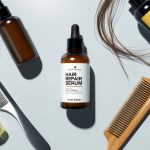How to Build a Skincare Routine for Glowing, Healthy Skin: Dermatologist Advice
The Power of Antioxidants and Serums
Topical antioxidants and serums play a key role in achieving healthy, glowing skin by targeting environmental damage and supporting the skin barrier. Proven ingredients like vitamin C and niacinamide offer powerful benefits when included in a daily regimen.
Benefits of Vitamin C for Radiant Skin
Vitamin C is a potent antioxidant known for brightening and evening out skin tone. It helps defend against free radicals triggered by UV rays and pollution, which can cause premature aging and dullness.
Dermatologists frequently recommend vitamin C serums for improving skin radiance and promoting a smoother texture. Consistent use of a vitamin C serum in the morning can enhance the skin’s defense system throughout the day.
Regular application may also reduce the appearance of dark spots and fine lines, promoting a more luminous complexion. For optimal results, apply vitamin C after cleansing but before moisturizing and using sunscreen.
To maximize protection from daily stressors and achieve noticeable brightness, consider choosing serums with stable forms of vitamin C, such as ascorbic acid. There is evidence that these serums help the skin look glowier and healthier, especially when used alongside a broad-spectrum sunscreen.
More information about the role of antioxidants in skincare routines highlights the benefits of morning application.
Incorporating Niacinamide and Other Antioxidants
Niacinamide, also known as vitamin B3, supports skin clarity by reducing redness and minimizing the appearance of pores. It is well-tolerated by most skin types and is often paired with vitamin C for a comprehensive antioxidant boost.
Niacinamide is valued for its ability to regulate oil production and reinforce the skin barrier. Other antioxidants, such as vitamin E, ferulic acid, and green tea extract, can further enhance protection against oxidative stress.
Combining these ingredients in serums can create a synergistic effect, helping the skin resist daily environmental challenges while improving resilience and smoothness. Using antioxidant serums as part of a morning routine can provide layered protection.
Cleanse and tone first, then apply your antioxidant serum, followed by moisturizer and sunscreen. For details on how to add these steps to a routine, see this guidance on unlocking radiant skin with antioxidant serums.
Exfoliation for Glowing, Healthy Skin
Exfoliation plays a critical role in achieving glowing skin by removing dead skin cells and encouraging cell turnover. Choosing the right exfoliation method and frequency can help maintain a balanced, effective skin care routine.
Types of Exfoliants: Physical vs. Chemical
Physical exfoliants use small particles or tools to manually slough off dead skin cells. Examples include brushes, sponges, and grainy scrubs.
Mechanical exfoliation can be effective when done gently, but overuse or excessive pressure may lead to skin irritation or microtears. Chemical exfoliants rely on active ingredients like alpha hydroxy acids (AHAs) and beta hydroxy acids (BHAs) to dissolve the bonds between dead cells.
These products help achieve glowing skin while reducing the risk of surface damage. Chemical exfoliants, such as glycolic acid or salicylic acid, are often better tolerated by sensitive or acne-prone skin types.
For most, choosing between physical and chemical exfoliation depends on skin type and personal preference. Dermatologists often recommend starting with chemical exfoliants for most skin care routines due to their even results and ability to minimize irritation, as highlighted by the American Academy of Dermatology.
How Often Should You Exfoliate?
The ideal frequency of exfoliation depends on skin type, product strength, and skin care goals. Most dermatologists suggest exfoliating one to three times per week for glowing, healthy skin.
Over-exfoliation can weaken the skin barrier, causing dryness, redness, and increased sensitivity. Those with oily or acne-prone skin may tolerate more frequent exfoliation.
In contrast, sensitive or dry skin types benefit from limiting exfoliation to once per week or even less. Short exfoliation sessions, such as 30 seconds of gentle, circular motions with a scrub, are usually sufficient for physical exfoliants, while chemical exfoliants should be used according to product instructions.
Always monitor skin response, and adjust frequency if irritation or discomfort develops. For safe guidelines, refer to professional tips like those offered by Vanguard Dermatology.



